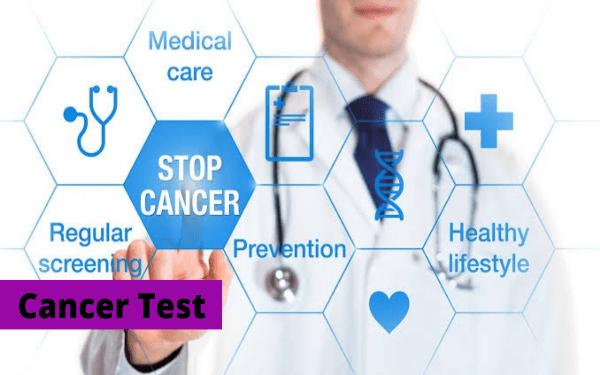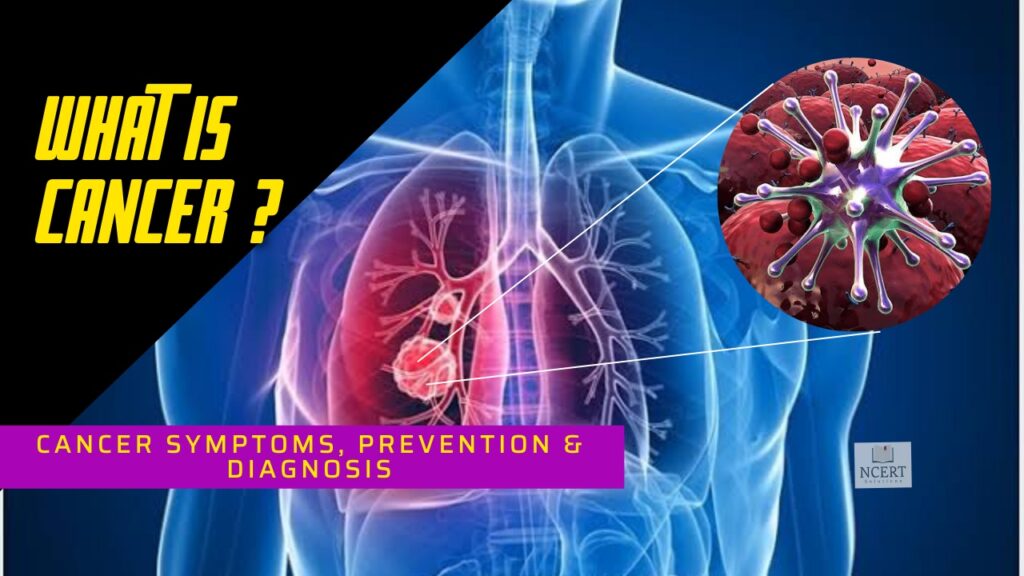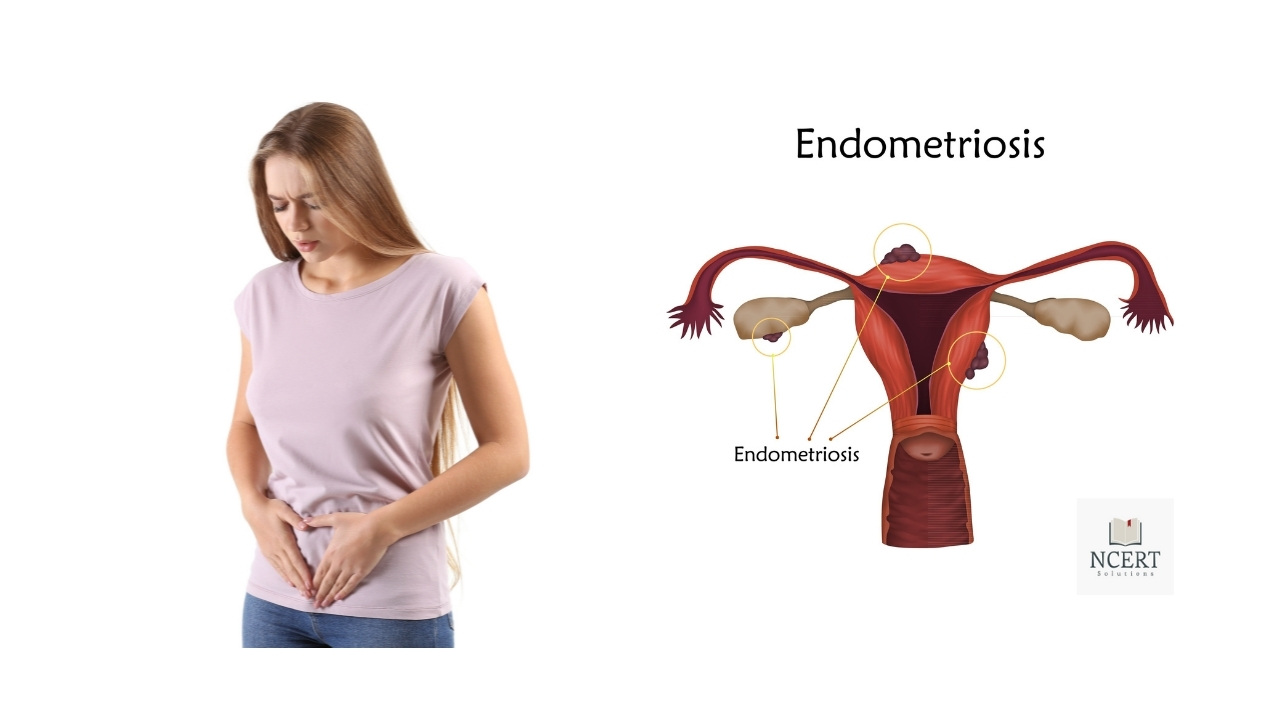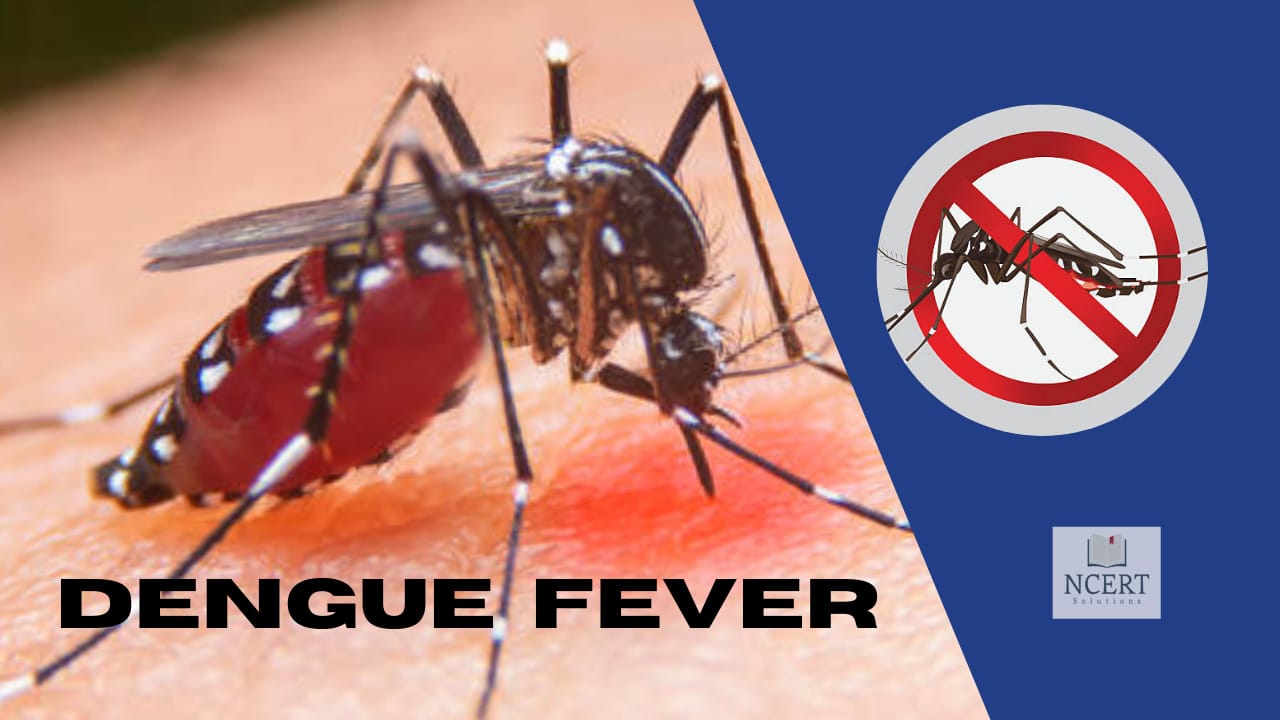Cancer is a group of diseases in which cells start growing abnormally. These cells grow to form a tumor, which is a lump of abnormally increased fat.
It can affect the cells present in any part or organ of the body. In this, the affected cells keep on dividing or they start spreading. As a result, the tumor starts growing or the cancer spreads to other parts of the body.
Tumors that occur in cancer are usually of two types, which are known as benign and malignant. Benign tumors do not spread from one part of the body to another, whereas malignant ones tend to spread.
Along with the different types of cancer, their internal causes can also be different. However, the causes of the most common types are mainly –
- genetic changes
- stress
- smoking
- alcohol consumption
- low-fiber diets
- exposure to chemical radiation, and many other factors.
Diagnosis
To diagnose cancer, a physical examination is done first, followed by –
- an X-ray
- CT scan
- MRI and
- PET scan, etc.
Cancer can be prevented to a great extent by avoiding the causes and risk factors of cancer.
There are several treatment procedures that can be done to treat cancer, mainly including –
- chemotherapy
- radiation therapy and
- several surgical procedures.
If the cancer is detected in the early stages i.e. cancer has not become serious, then it can be completely cured with the help of treatment.
However, it is not always possible to eliminate it completely every time. In this case, with the help of treatment procedures, cancer is done to prevent it from becoming serious and other complications.
What is Cancer?
Cancer is a disorder of abnormal growth of cells. In this disease, cells start growing uncontrollably, which is not part of the normal growth system of the body. According to experts, abnormal changes or mutations in DNA cause most cancers.
However, not all cell types present in a tumor are the same. Only one percent of cancer stem cells (CSCs) are present in the tumor. CSCs look very similar to normal body cells but have the ability to self-renew. These are the same cells that prevent cancer to spread.
These cells divide and begin the process of transformation to form a new cell tumor. According to WHO, cancer is the second leading cause of mortality worldwide.
Symptoms
What are the early signs and symptoms of cancer – What is the diagnosis of cancer?
Cancer Symptoms may vary according to the types and parts of the body where cancer has occurred. Apart from this, some specific cancer symptoms can also be seen, which depend on the type of cancer and the location of the Cancer. However, there are some other symptoms as well, which can be seen with cancer such as :
- Sudden increase or decrease in body weight
- Feeling tired and weak
- Frequent bruising of any part of the skin
- lump feeling under the skin
- Cough or difficulty in breathing for more than a month
- Changes in the skin (such as a change in the size or structure of a lump on the skin)
- Early skin scarring
- Digestive diseases such as diarrhea or constipation
- Difficulty swallowing
- loss of appetite
- Change in voice
- Frequent fever
- Night sweats
- Muscle and joint pain
- Slow wound healing
- Frequent infections
When to see a doctor?
If you feel any of the above cancer symptoms, then it is better to talk to the doctor as soon as possible. This is because it is possible to prevent some types of cancer only at an early stage. It is important to note that all the above symptoms are not seen in all cancer patients, some people start showing symptoms suddenly in the late stages of cancer.
While some people do not feel any symptoms and when they get tested for some other health problem, they also know that they are suffering from Cancer. Therefore, if you feel even the least cancer symptoms, you should talk to the doctor.

When, why, and how does cancer occur?
Cancer is usually caused by some changes or mutations in the DNA. In simple language, DNA is the brain of cells, which instructs them to multiply. When there is a defect in these instructions, cells begin to grow uncontrollably, and as a result, cancers develop.
There are also some substances, which can cause cancer, these substances are called “carcinogens”. Carcinogens are considered one of the major causes of Cancer.
Mainly, carcinogens are found in these things – such as chemicals in smoke and exposure to ultraviolet rays, etc. Apart from this, the human papillomavirus can also cause cancer in some cases. However, no single carcinogen can be held responsible for cancer. There are also other carcinogens, which together with factors such as diet and health can cause cancers.
When does the risk of getting cancer increase?
The main risk factors for cancer include:
- Long-term use of tobacco or its products such as cigarettes or chewing gum can cause mouth cancers and lung cancers in humans.
- Consuming alcohol for a long time increases the risk of getting cancer in many parts, including liver cancer.
- An unhealthy diet and refined foods that are low in fiber can increase the risk of colon cancer.
- With age, the risk of getting some types of cancers also increases, such as colon cancer, breast cancer and prostate cancer etc.
- Genetic defects or mutations can also increase the risk of getting cancers to a great extent. For example, if women have any type of mutation in the BRCA1 or BRCA2 genes, the risk of developing breast cancer increases.
- Having cancer first in the family also increases its risk, most of the cases of breast cancer are seen in this.
- Certain harmful substances exposed to humans during work can also increase the risk of cancer, as chemicals such as dyes, tar, and aniline can increase the risk of bladder cancers.
- Bacterial and viral infections cause certain systemic disorders, which serve as a predisposing factor for cancer. For example –
- H pylori infection – colon cancers
- hepatitis B and C – liver cancers and
- human papillomavirus infection can cause cervical cancers
- Exposure to ultraviolet rays for a long time and exposure to radiation due to repeated X-rays can also increase the risk of getting cancer.
If someone in your family has had cancer in the past or you are at high risk for any other reason, then there is a need to reduce this risk by adopting a healthy lifestyle as soon as possible.
Prevention
How to prevent cancer?
The development of cancer can be prevented by adopting a healthy lifestyle and reducing risk factors. Following are some ways to prevent it:
- Don’t Smoke
- Do not drink alcohol
- Do not expose to sunlight
- Take fiber rich diet. Do not take too much fat in the diet and do not use red meat (pork or beef).
- Do not eat food prepared outside or canned.
- If you work in a place where you are at risk of exposure to radiation, wear adequate safety equipment.
- Exercise regularly and maintain your body weight.
- Check your BMI (Body Mass Index) daily.
- Get your body checked regularly so that if any kind of problem arises, it can be detected immediately.
- If the skin has started turning blue, any wound is not healing or if there is any disease for a long time, then talk to the doctor about this.
- Get all vaccinations done regularly. The human papillomavirus vaccine protects against developing cervical cancer. Also get the hepatitis B vaccine, because hepatitis B can cause liver cancer.
- Learn how to reduce stress. Spend time with your friends and family, do a favorite activity (hobby), do yoga and meditation, and participate in sports and other activities that calm the mind.
Cancer Test
How is cancer tested?
When performing a physical examination for cancer, the doctor first examines the patient’s age, past health status, family diseases, and symptoms. Apart from this, some questions are also asked from the patient and his family members, with the help of which an attempt is made to get information related to cancer.
If the doctor also suspects cancer, then he recommends some tests, with the help of which the cancer is confirmed –

- Physical test –
- With the help of this the health abnormalities of the person are detected.
- Lab test –
- Some tests are done by taking a sample of a person’s blood, including CBC, ESR, C-reactive protein, liver function test and kidney function test.
- Imaging test –
- These include X-Ray, CT scans, MRIs, Barium Meal Studies, Bone Density Scans, PET scans, SPECT scans and USG scans.
- Biopsy –
- In this, a small sample of tissue is taken from the tumor or affected part of the skin, which is examined with the help of a microscope. With the help of a microscope, it is known at which stage there is cancer.
Apart from this, some other tests can also be done, from which some information about the origin, type, and structure of the cancer-affected area can be obtained. These tests include the following –
- Cancer Antigen 19.9 ( CA 19.9)
- Carcinoembryonic antigen (CEA)
- Prostate Specific Antigen (PSA)
Treatment
How can cancer be cured?
Surgery, radiation therapy, or chemotherapy are done to treat cancer. Apart from this, hormone therapy and immunotherapy are also done. Your doctor will determine which of these treatments is right for you. In addition, there are medications and other treatments available to improve the quality of life and reduce symptoms.
Surgical Treatment
In this treatment procedure, abnormally growing parts of the cells are removed. This procedure is also done by the biopsy technique itself. This procedure is usually done only if the tumor is in a place that is easily accessible.
Non-Surgical Treatment
A chemotherapy procedure is used in this. In chemotherapy, abnormally growing cells are destroyed with the help of special drugs. Apart from this, radiotherapy is also included in non-surgical treatment, because it destroys tumors or abnormally growing fast with the help of gamma radiation.
Sometimes both surgical and non-surgical treatment procedures are used. First chemotherapy or radiotherapy is done, with the help of which the size of the tumor is reduced, and then it is removed with the help of surgery. After surgery, chemotherapy and radiotherapy are done again, so that cancer does not spread to any nearby area.
There are also some other treatment procedures to treat cancer, such as hormone therapy, immunological treatment, bisphosphonates, etc. These treatment procedures are used only in special situations. For example, hormone therapy may be a good treatment option for prostate cancer.
Apart from this, some other medicines can also be given according to the symptoms caused by cancer. These drugs mainly include painkillers, antacids, and antipyretic drugs. Sometimes, in severe cases, persistent pain can be reduced only by applying a patch of morphine or other painkillers. However, reducing the pain cannot stop cancer from progressing.
Damages caused by cancer
Consequences of cancer
The consequences of cancer usually depend on its type. If the size of the tumor is still small or the cancer is in an early stage, then it is easy to treat and its results are also good. In addition, the outcome of metastatic cancer is not good.
This is because metastasis cannot be completely stopped from spreading cancer and as a result, the affected organs of the body stop functioning (which is referred to as “organ failure”). Not only this, but the outcome of cancer can also depend on the type of tumor and which part of the body is affected, etc.
Cancer complications
Complications from cancer usually also depend on which part of the body is affected. Cancers that spread (metastatic) can cause more complications and risks than cancers that do not spread. There can be some complications according to different parts of the body, which include –
- Heart failure
- Pulmonary edema
- Liver failure
- Kidney failure
- Frequent infections due to a weakened immune system
Life with cancer
People affected by cancer should adopt a normal lifestyle to control prevailing cancer symptoms and improve life, which is as follows
- Eat healthy food prepared at home, which is rich in nutrients.
- Exercise daily for 30 minutes. You can exercise 5 days a week. If you can’t do strenuous exercise, walk briskly for 30 minutes.
- Do not consume tobacco and its products or drink alcohol. You can take the help of a doctor to get rid of them.
- Get your health checked regularly to know how much of the cancer is being controlled as it progresses.
- To reduce physical and mental stress, do yoga and meditation or do any of your favorite work.
- Try to be happy, upbeat, and positive all the time. Because not all cancers are incurable or fatal.
Types of cancer?
Depending on the tissue from which it started, cancer can be divided into the following types –
- Carcinoma –
- Carcinoma Cancer usually occurs in epithelial tissues. Epithelial tissue forms the surface of organs inside and outside the body, such as the skin, the surface of the intestine, the inside of the mouth, and the inside of the nose. Carcinoma is considered the most common type of cancer. Some examples of carcinomas usually include prostate Cancers, breast Cancers, and Cancers of the squamous cells of the skin.
- Sarcoma –
- It is a malignant cancer occurring in the connective tissues. Connective tissue is also called connective tissue, which works to connect different parts of the body with each other. For example, cancers in adipose tissue, areolar tissue, tendons, ligaments, and bones.
- Leukemia –
- It is a cancer of the blood, which occurs when white blood cells start forming in the blood uncontrollably. The main types of leukemia include lymphocytic (acute and chronic) and myeloid (acute and chronic). The terms lymphocytic and myeloid leukemia refer to cancers of cells that are mutating to form white blood in the bone marrow and are at different stages.
- Lymphoma –
- It is a cancer of the lymphatic system and its related organs. Lymph (lymphatic fluid) is a special fluid, which is formed in the microscopic spaces between tissues. It is spread in various parts of the body in the form of lymphatic vessels and glands. The lymphatic fluid contains lymphocytes, which help the body fight infection. Cancers in these areas (lymphoma) is generally of two types, known as Hodgkin and non-Hodgkin lymphoma.
Apart from this, according to the part of the body in which cancer has occurred, cancer can also be divided into the following names:
- Breast Cancers
- Cervical Cancers
- Oral Cancers
- Prostate Cancers
- Uterine Cancers
- Ovary Cancers
- Blood Cancers
- Lung Cancers
- Colon Cancers
- Throat Cancers
- Liver Cancers
- Skin Cancers
- Bladder Cancers
- Brain Cancers
- Kidney Cancers
- Testicular Cancers
- Pancreatic Cancers
- Endometrial Cancers
- Vaginal Cancers
Cancer stages
Cancer stage and grade
The stage of cancer is determined by examining the cancerous tissue. There are two ways of assessing the status of a tumor, which are called grading and staging. Grading and staging also help in ensuring proper treatment when there is a malignant tumor.
Grading is a histologic procedure in which tissues are examined under a microscope. Whereas staging is a clinical process, in which the stage of cancer is detected by simple screening procedures. Detailed information about both these processes is given below –
Cancer grading
In this, the tissue is first examined under a microscope and then the cancer is classified according to the grade. A microscope image of cancerous tissue usually provides information about two things –
- the rate at which Cancers are growing and
- the structure of cancerous cells compared to healthy cells.
When cancer cells have grown in large numbers in any part of the body, then it is called “benign”. When cancer cells have spread not only in one part but also to other places, then this condition is called metastatic.
Brodar’s grading system is based on the extent of variation in cancer cells, which occurs in the case of more mutated cancer cells. This refers to cells that appear normal and gradually spread to the cells with the least changes. These cells look very similar to their normal form. Some of these are as follows –
- fully transformed cell
- Cells with about half the change
- Cells with about half the change
- Low variegation cell
Investigations are done with the help of pathological tests, lab tests as well as clinical exams. With the help of these tests, it is determined where the tumor or cancer has spread.
TNM staging and the American Joint Committee (AJC) are the two main methods used to determine the stage and grade of cancers and are the only ones being used recently.
Cancer staging
There are three parts to TNM staging, in which –
- T – refers to the primary tumor
- N – refers to the lymph node and
- M – refers to the metastasis.
These three components are represented by numbers. The numbers of these components are as follows, which shows how far cancer has spread or spread.
- T ZERO – which means no tumor is found
- T ONE-3 – Numbers 1 to 3 indicate that the tumor is increasing in size. This means, the larger the number, the bigger the tumor.
- N ZERO – means there is no chainsaw in the lymph node.
- N ONE to N THREE – This shows the size and number of cancers in the lymph node. Along with this, it also helps to know how many lymph nodes are affected. The higher the number, the greater the number of lymph nodes affected.
- M ZERO – indicating that the metastasis has not spread elsewhere.
- M ONE – Indicates that the tumor has spread from one site to another.




